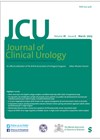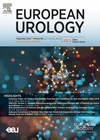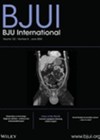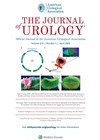
Journal Reviews
Adjustable Transobturator Male System® as a novel treatment for men with stress urinary incontinence
Stress urinary incontinence (SUI) in men is a debilitating condition, often occurring after prostate cancer surgery, with an incidence ranging from 4% to 40%. Key predictors of SUI post-prostatectomy include age, body mass index (BMI), comorbidity index, lower urinary tract...
Oncological benefits of extended pelvic lymph node dissection
Touijer and colleagues present extended follow-up results from a large randomised trial comparing limited pelvic lymph node dissection (l-PLND) and extended PLND (e-PLND) in prostate cancer patients undergoing radical prostatectomy. The study aimed to assess whether e-PLND, which includes external...
Anti-VEGF and PD-1 combinations in renal cell carcinoma
Over the past decade, vascular endothelial growth factor (VEGF) tyrosine kinase inhibitors (TKIs) have been central to treating renal cell carcinoma (RCC), with oncologists refining dosing strategies to balance treatment efficacy with quality of life (QoL). Recently, the introduction of...
Defining adjuvant, consolidative, and salvage treatment after RP
The most common oncologic outcome following radical prostatectomy (RP) for localised prostate cancer is achieving undetectable prostate-specific antigen (PSA) levels (<0.1 ng/ml), indicating an absence of detectable disease. However, the landscape of RP is shifting as active surveillance becomes the...
Intravesical instillation of chemotherapy before radical surgery for upper UTUC
Upper urinary tract urothelial carcinoma (UTUC) is a rare but increasingly prevalent form of urothelial cancer, accounting for 5–10% of cases, with an annual incidence of two to three cases per 100,000 individuals in Western Europe. Radical nephroureterectomy (RNU) with...
Prevalence, diagnosis, and management of SUI in women
Stress urinary incontinence (SUI) is a widespread condition characterised by involuntary urine leakage triggered by physical activities such as coughing, sneezing, laughing, or exercise. Despite significantly impacting the quality of life (QoL), SUI remains underdiagnosed and undertreated, creating a substantial...
The future of bladder-sparing therapy is bright
Trimodal therapy (TMT), combining optimal transurethral resection of bladder tumour (TURBT) and concurrent chemoradiotherapy, has garnered significant attention for managing muscle-invasive bladder cancer (MIBC). This approach offers the potential for bladder preservation while delivering oncological outcomes comparable to radical cystectomy....
Tissue-based biomarkers steering clinical decisions in patients with urothelial cancer
Biomarkers play an essential role in the diagnosis and treatment of urothelial cancer (UC), with PD-L1, FGFR, and MMR proteins being the most clinically established. These biomarkers, derived from histological specimens, guide therapeutic decisions for bladder cancer (BCa) and upper...
Are standard repeat biopsies during active surveillance for prostate cancer still necessary?
Active surveillance (AS) has emerged as a key strategy for managing low-risk prostate cancer (PCa), offering an alternative to immediate treatment. Initially, AS relied on prostate specific antigen (PSA) testing, digital rectal examinations (DRE), and systematic biopsies. Early studies using...
Cost effectiveness of prostate cancer screening in Europe
Prostate cancer (PCa) stands as the most prevalent cancer and the third leading cause of cancer-related deaths among men in Europe. According to data from the European Commission, in 2020, PCa represented a staggering 23.2% of all new cancer cases...
How can we reduce morbidity after RARC with intracorporeal neobladder?
Robot-assisted radical cystectomy (RARC) is a complex procedure with high postoperative morbidity, especially when combined with neobladder reconstruction, which has a higher complication rate compared to other urinary diversions. To minimise these complications, it is crucial to understand their nature...
Predicting resolution of the primary obstructed megaureter
Primary obstructive mega ureter (POM) is the congenital dilatation of the ureter in the absence of other structural urinary tract anomalies and comprises 10–20% of prenatal hydronephrosis cases. It is often detected during workup for prenatal hydronephrosis and confirmed using...








